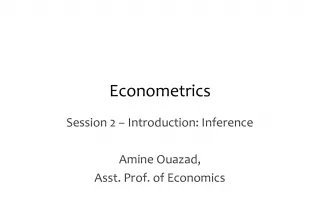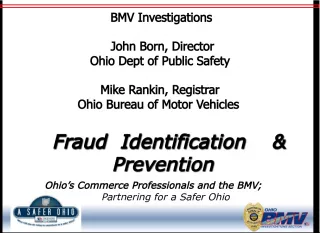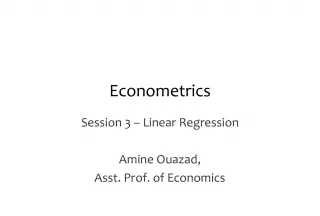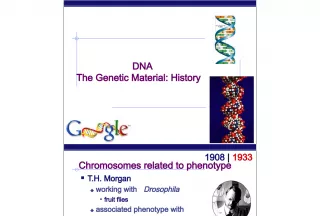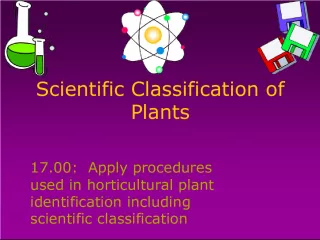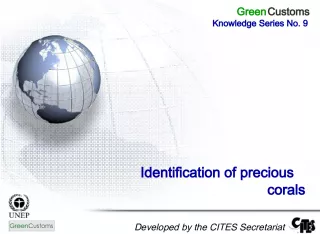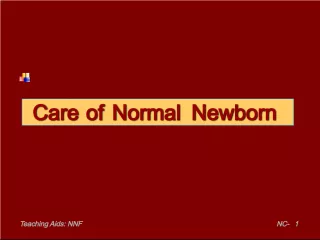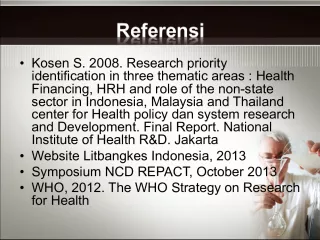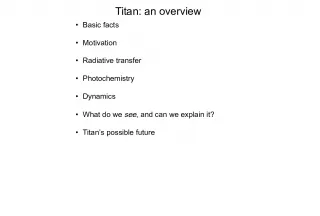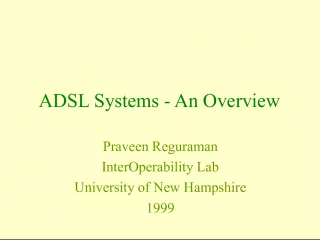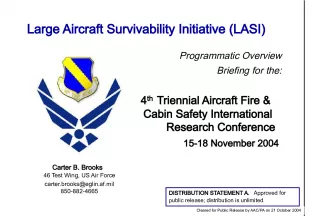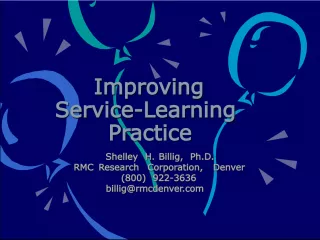Overview of Prokaryotes and their Identification
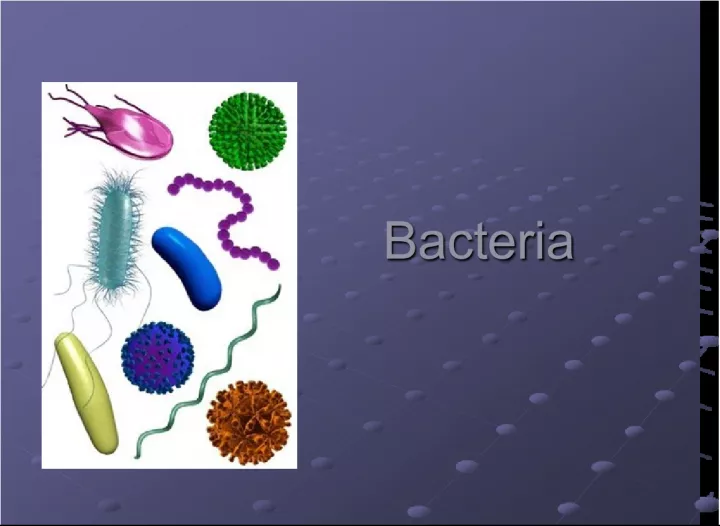

Prokaryotes are single-celled organisms without a nucleus. Eubacteria have walls containing peptidoglycan, while Archaebacteria lack it and have DNA similar to eukaryotes. They can be identified by their shapes - bacilli, cocci, and spirilla.
- Uploaded on | 2 Views
-
 liset
liset
About Overview of Prokaryotes and their Identification
PowerPoint presentation about 'Overview of Prokaryotes and their Identification'. This presentation describes the topic on Prokaryotes are single-celled organisms without a nucleus. Eubacteria have walls containing peptidoglycan, while Archaebacteria lack it and have DNA similar to eukaryotes. They can be identified by their shapes - bacilli, cocci, and spirilla.. The key topics included in this slideshow are . Download this presentation absolutely free.
Presentation Transcript
1. Bacteria Bacteria
2. I. Prokaryotes I. Prokaryotes A. Prokaryotes: single-celled organisms that lack a nucleus A. Prokaryotes: single-celled organisms that lack a nucleus 1. Eubacteria – walls contain peptidoglycan (a carbohydrate) 1. Eubacteria – walls contain peptidoglycan (a carbohydrate) 2. Archaebacteria – lack peptidoglycan, DNA similar to eukarotes 2. Archaebacteria – lack peptidoglycan, DNA similar to eukarotes
3. B. Identifying Prokaryotes B. Identifying Prokaryotes 1. Shapes 1. Shapes a. Bacilli (rod shaped) a. Bacilli (rod shaped) b. Cocci (spherical) b. Cocci (spherical) c. Spirilla (spiral) c. Spirilla (spiral)
4. 2. Cell Walls 2. Cell Walls a. Gram-positive (w/peptidoglycan) – purple a. Gram-positive (w/peptidoglycan) – purple b. Gram-negative (w/o peptidoglycan – red b. Gram-negative (w/o peptidoglycan – red
5. 3. Arrangement 3. Arrangement a. Staphyl: Clumps or clusters a. Staphyl: Clumps or clusters b. Strepto: long chains b. Strepto: long chains
6. 4. Movement 4. Movement a. Propelled by tail-like structure called flagella a. Propelled by tail-like structure called flagella b. Glide along a slime secretion b. Glide along a slime secretion c. Move along like snakes c. Move along like snakes d. Some don ’ t move d. Some don ’ t move
7. C. Obtaining Energy C. Obtaining Energy 1. Autotrophs 1. Autotrophs a. Photoautotrophs: obtain energy from photosynthesis a. Photoautotrophs: obtain energy from photosynthesis b. Chemoautotrophs: obtain energy from inorganic molecules b. Chemoautotrophs: obtain energy from inorganic molecules
8. 2. Heterotrophs 2. Heterotrophs a. Can cause food poisoning a. Can cause food poisoning b. Photoheterotrophs: photosynthetic, but also need organic compounds for nutrition b. Photoheterotrophs: photosynthetic, but also need organic compounds for nutrition
9. D. Releasing Energy D. Releasing Energy 1. Obligate aerobes: require oxygen 1. Obligate aerobes: require oxygen 2. Obligate anaerobes: cannot live in presence of oxygen 2. Obligate anaerobes: cannot live in presence of oxygen 3. Facultative anaerobes: do not need oxygen, but can live in the presence of it 3. Facultative anaerobes: do not need oxygen, but can live in the presence of it
10. E. Growth and Reproduction E. Growth and Reproduction 1. Binary fission: cell divides, asexual 1. Binary fission: cell divides, asexual 2. Conjugation: transfer of genetic information from one cell to another, sexual 2. Conjugation: transfer of genetic information from one cell to another, sexual 3. In unfavorable conditions, many bacteria can form endospores – can remain dormant for months or years 3. In unfavorable conditions, many bacteria can form endospores – can remain dormant for months or years
11. II. Bacteria in Nature II. Bacteria in Nature A. Decomposers A. Decomposers 1. Help recycle nutrients – break down dead organisms 1. Help recycle nutrients – break down dead organisms 2. Used in sewage treatment 2. Used in sewage treatment
12. B. Nitrogen Fixers B. Nitrogen Fixers 1. Nitrogen fixation: converting nitrogen into a form plants can use 1. Nitrogen fixation: converting nitrogen into a form plants can use 2. Rhizobium grow on roots of soybeans and other legumes – converts nitrogen to ammonia for the plant 2. Rhizobium grow on roots of soybeans and other legumes – converts nitrogen to ammonia for the plant
13. C. Bacteria and Disease C. Bacteria and Disease 1. Pathogen: disease-causing agents 1. Pathogen: disease-causing agents 2. 2 ways bacteria cause disease 2. 2 ways bacteria cause disease a. Break down tissues for food a. Break down tissues for food b. Release toxins b. Release toxins 3. Many can be treated with antibiotics 3. Many can be treated with antibiotics
14. D. Human Uses of Bacteria D. Human Uses of Bacteria 1. Food – cheese, yogurt, buttermilk, sour cream, pickles, sauerkraut 1. Food – cheese, yogurt, buttermilk, sour cream, pickles, sauerkraut 2. Industry – cleaning up oil spills, mining minerals, synthesizing drugs 2. Industry – cleaning up oil spills, mining minerals, synthesizing drugs
15. 3. Bacteria live in our digestive tract to help in digestion (called normal flora) 3. Bacteria live in our digestive tract to help in digestion (called normal flora)
16. E. Controlling Bacteria E. Controlling Bacteria 1. Sterilization: destroy bacteria by subjecting them to great heat or chemicals 1. Sterilization: destroy bacteria by subjecting them to great heat or chemicals a. Boiling, frying, steaming can all kill bacteria a. Boiling, frying, steaming can all kill bacteria b. Disinfectant chemical solutions can be used in homes and hospitals b. Disinfectant chemical solutions can be used in homes and hospitals 2. Refrigeration – bacteria grow slowly at low temperatures 2. Refrigeration – bacteria grow slowly at low temperatures
17. Antibiotics • Fighting Bacteria Bacterial disease can be fought with soap, chemicals, and antibiotics. • Antibiotic-Resistant Bacteria Mutations that confer resistance to antibiotics are strongly favored in bacterial populations being treated with an antibiotic.
18. III. Viruses III. Viruses A. Viruses: particles of nucleic acid and protein A. Viruses: particles of nucleic acid and protein 1. Nucleic acid = DNA or RNA that contains instructions for making new copies of the virus 1. Nucleic acid = DNA or RNA that contains instructions for making new copies of the virus 2. Capsid: outer protein coat 2. Capsid: outer protein coat
19. B. Viral Infection B. Viral Infection 1. Infect cells and replicate inside host cell 1. Infect cells and replicate inside host cell 2. Bacteriophage: viruses that infect bacteria 2. Bacteriophage: viruses that infect bacteria
20. 3. 2 types of viral infections 3. 2 types of viral infections a. Lytic infection: virus enters cell, make copies of itself and causes the cell to burst a. Lytic infection: virus enters cell, make copies of itself and causes the cell to burst b. Lysogenic infection: virus embeds its DNA into DNA of host and is replicated with host cell ’ s DNA b. Lysogenic infection: virus embeds its DNA into DNA of host and is replicated with host cell ’ s DNA
21. C. Viruses and Disease C. Viruses and Disease 1. Many viruses can be prevented through the use of vaccines (polio, 1. Many viruses can be prevented through the use of vaccines (polio, measles, influenza) measles, influenza) 2. Oncogenic viruses cause cancer 2. Oncogenic viruses cause cancer 3. Retroviruses contain RNA 3. Retroviruses contain RNA 4. Prions contain no DNA or RNA, only protein 4. Prions contain no DNA or RNA, only protein
